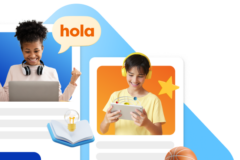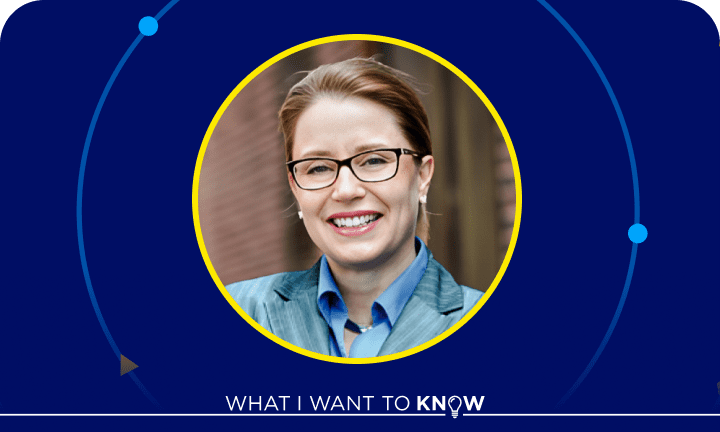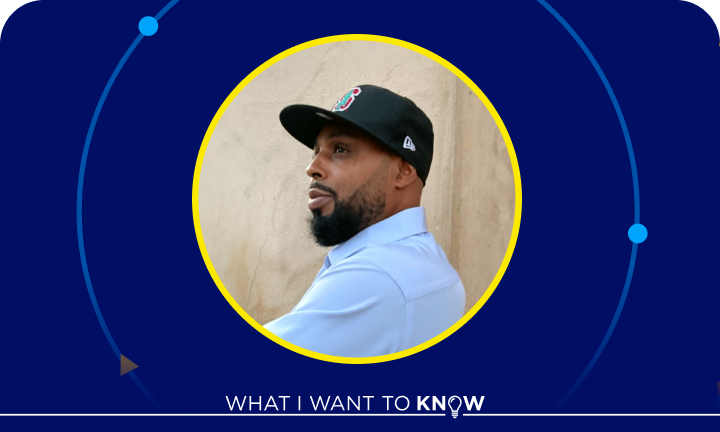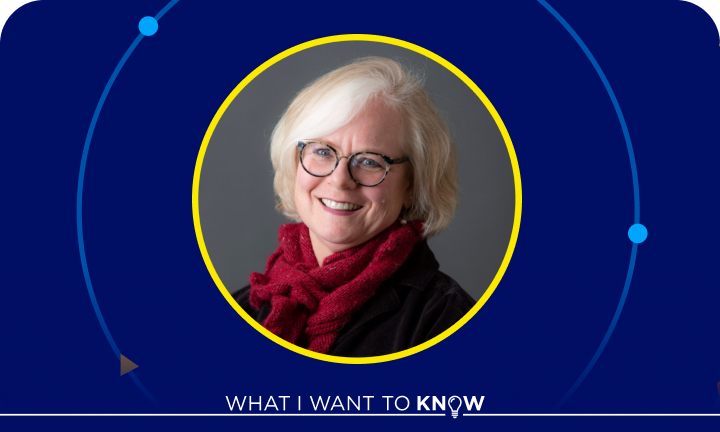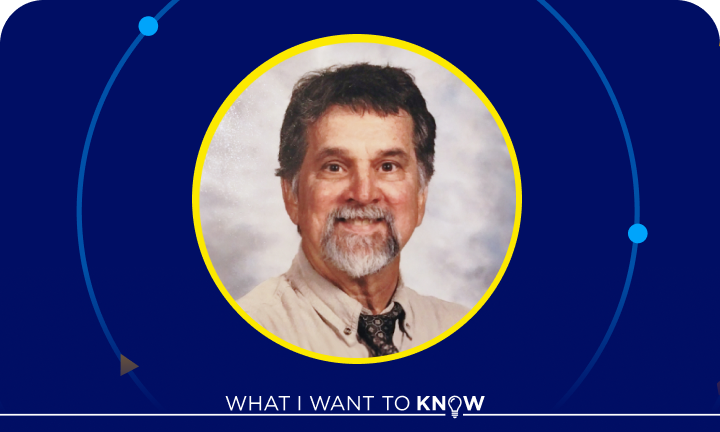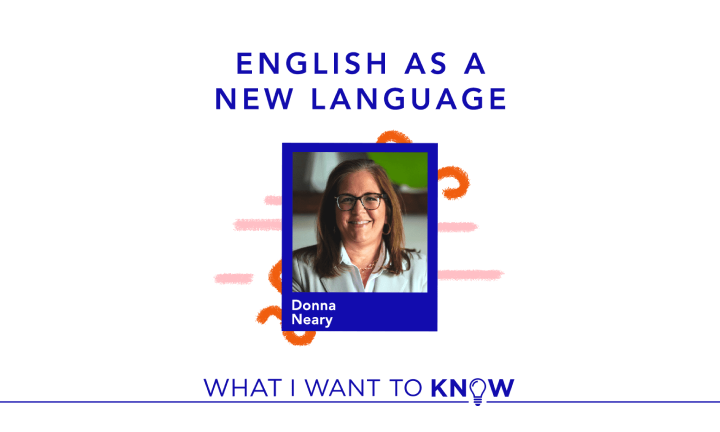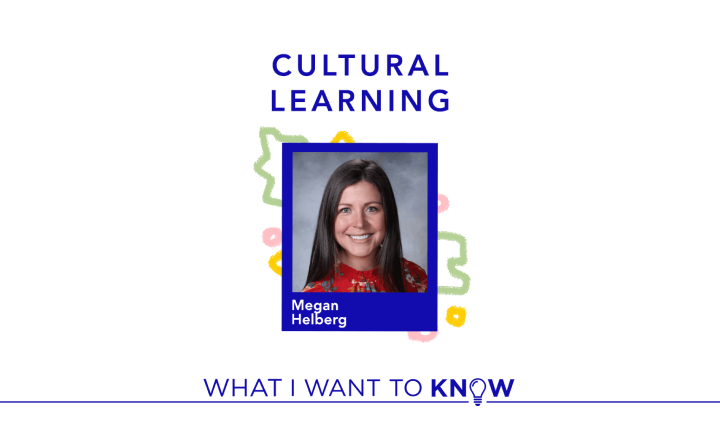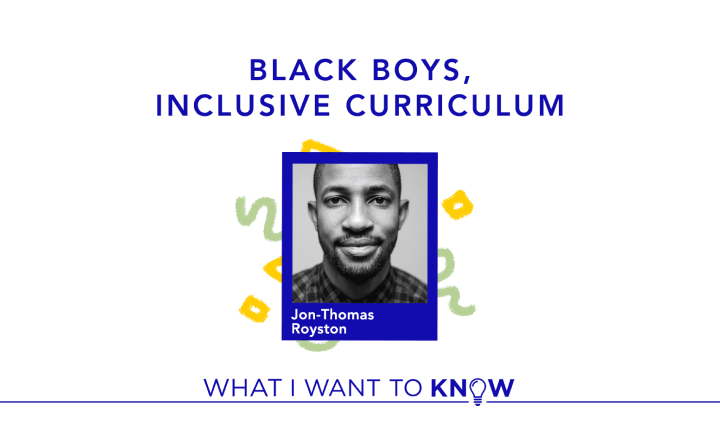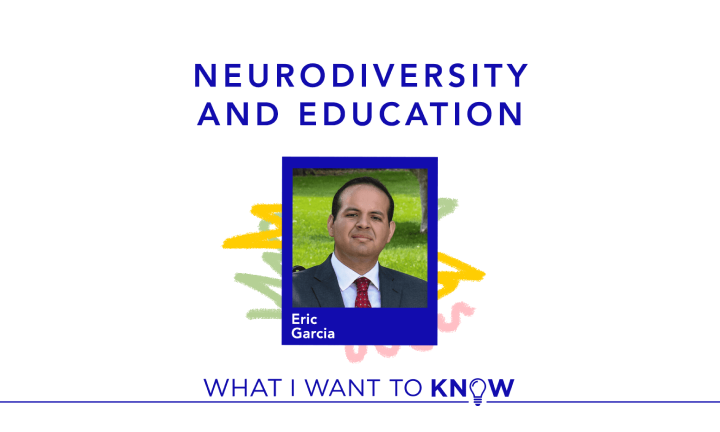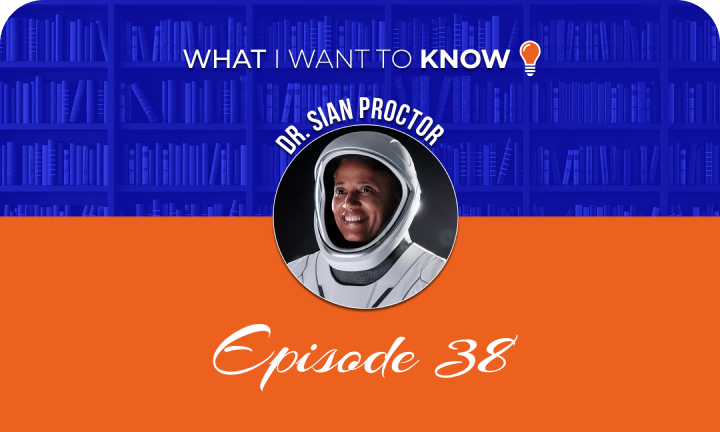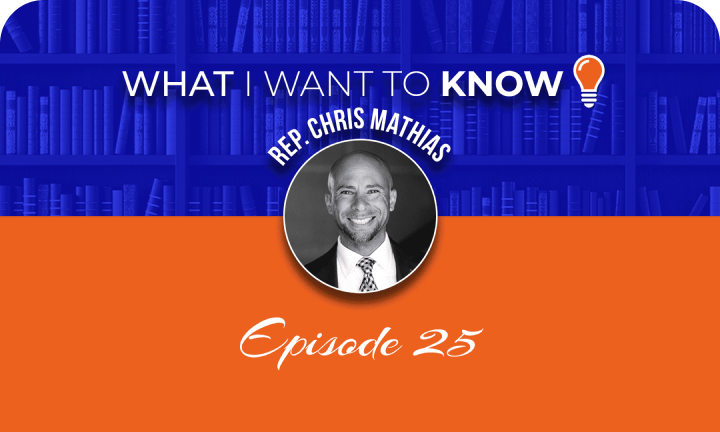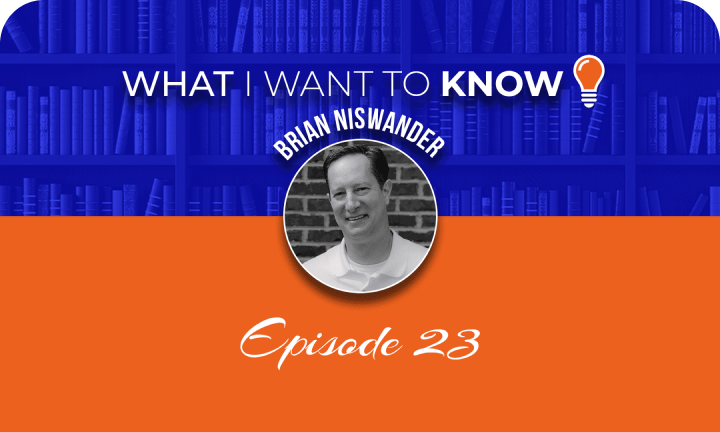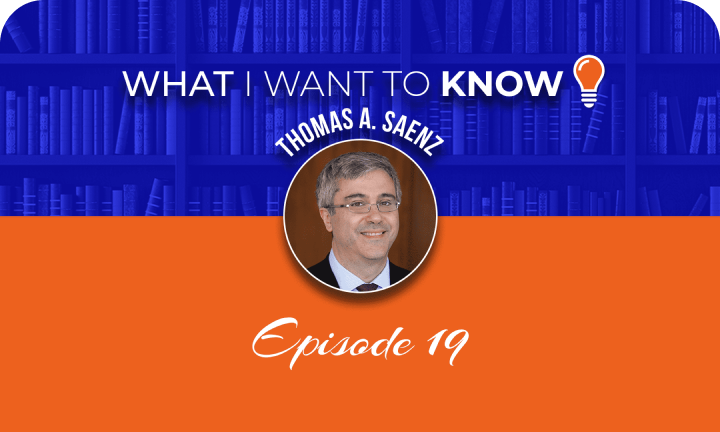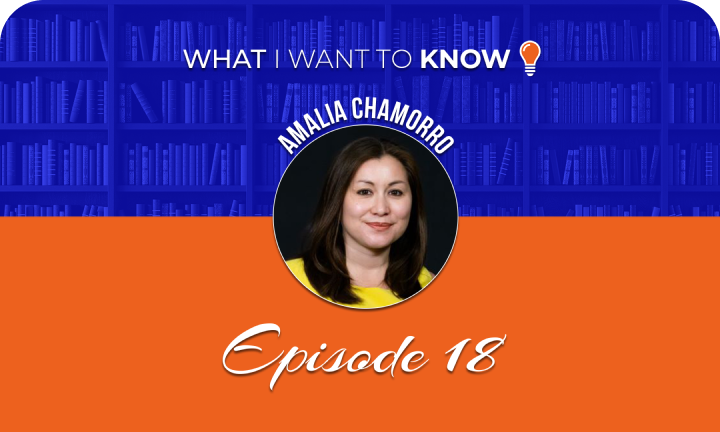October 16, 2024
EP. 166: How to Celebrate Cultures in Your Online Classroom: Insights from Paola Stauffer
As we celebrate Hispanic Heritage Month, we honor Hispanic Americans’ rich histories and contributions. But how do we make these celebrations truly meaningful in our digital age? And how do we turn virtual classrooms into spaces of genuine cultural exchange?
In a world where screens often divide us, one teacher has found a way to use them to unite cultures and ignite understanding.
In this episode, Paola Stauffer joins Kevin to discuss how she creates vibrant, culturally rich environments in the digital world, fostering empathy, connection, and a deep appreciation for diverse heritages.
Listen on: Apple Podcast, Spotify
Meet Paola
Paola Stauffer
is a high school Spanish teacher at Florida Cyber Charter Academy. She’s transforming
online education by turning a bedroom in her home into an interactive cultural exhibit
and using family recipes to engage students and their families.
Kevin P. Chavous: As we celebrate Hispanic Heritage Month, we honor the rich histories and contributions of Hispanic Americans. But in our digital age, how do we make these celebrations truly meaningful? And how do we turn virtual classrooms into spaces of real cultural exchange? In a world where screens often divide us, one teacher has found a way to use them to unite cultures and ignite understanding. This is what I want to know. Joining us today is Paola Stauffer, a high school Spanish teacher at Florida Cyber Charter Academy. She’s transforming online education by turning a bedroom in her home into an interactive cultural exhibit. And using family recipes to engage students and their families. Paola is here to share how she creates a vibrant, culturally rich environment in the digital world, fostering empathy, connection, and a deep appreciation for diverse heritages. Paola, welcome to the show.
Kevin P. Chavous: It is indeed a pleasure to have you on. You know, I get so excited to chat with teachers, and it doesn’t matter what they teach, but as long as they are doing good work for kids, there are so many unique approaches to teaching. You embody that, and there’s a lot I want to unpack. But first of all, how did you get into the teaching profession?
Paola Stauffer: Well, thank you so much for having me on your show. And I appreciate the welcome, I appreciate it. And the most that you have invited me as a world language teacher, a Spanish teacher. Yes. I feel like we are seen and that is great. How did I get into teaching? I was in kindergarten. When I was in kindergarten, I had that passion of being the bossy girl, telling the girls what to do. Playing at school was my favorite game. And ever since, I knew I wanted to be a teacher. So it’s been like a life passion.
Kevin P. Chavous: So you’re talking about, now, these are your words, “the bossy girl.” So that means you were holding class when you were a little girl with all your friends.
Paola Stauffer: Kind of. Yes, yes, yes. I have my group of friends and I don’t remember turning over the chairs and making the desk. So it really has been my dream job. The majority of my life.
Kevin P. Chavous: Now you’re originally from Colombia, correct?
Paola Stauffer: That is correct.
Kevin P. Chavous: And talk about the transition to the States. And as you pursue a career in teaching, what was that like? Because oftentimes that could be a challenge when you come from another country to try to become a teacher here in the States.
Paola Stauffer: That is correct. But I had my ways. In Colombia, I taught for 14 years: seven years in the private sector and seven years in the public sector. And then when I was ready to move here to the United States, I started looking for a job before I moved. I lived in Celebration, Florida, and there was an immersion school there. I contacted them when I was in Colombia and I said, “I’m going to volunteer at your school.” If you allow me, the principal happened to be Colombian, which was totally in my favor. And that’s how I started. Once I joined that school, that was an immersion school. They taught different languages, including Spanish. So that was perfect for me. But then I started doing the paperwork to validate my career in Colombia here. And that worked just flawlessly. And I became a teacher here.
Kevin P. Chavous: Now we’re going to unpack your unique approach to teaching as a Spanish teacher. I wonder how much your background and where you came from influenced that approach because, you know, part of the challenges I think traditional education has had is, you know, moving away from the one size fits all, you know, teachers stand and lecture and the kids take notes and then they give it back to a teacher in a test. Then they forget it the next day. But we’re… this idea of having innovation and creativity in the classroom has taken on different… And how has your background with your teaching experience in Colombia influenced this sort of new approach you’ve taken to engage in this sort of virtual museum concept and the like?
Paola Stauffer: Yeah, this is, this was definitely a different experience, a concept, you know, teaching in Colombia, Latin American country. I was an English teacher there. I also taught Spanish there and then coming here, different cultures, different approaches in education. But one thing was common and that is the passion that I have and the love I have for my profession. And I think that is what has kept me in the right place and in the right position, always, moving here and teaching here. Of course, it was at the beginning different, very, very different. But I made my ways. Number one to teach Spanish. I am familiar with the Spanish, but then to be who I am and who I learned to be in Colombia as a teacher, I am very proud of the education I got there. Just a little bit of that in Colombia, there is a system where you become a teacher in high school, middle and high school. Once you graduate from high school, you’re certified to teach in elementary school. So what I learned in that section of my life as a teacher is what I have carried in my heart throughout until today. And when I came to the U.S. and I started teaching and getting to know the system better and better, and not only this system, the educational system, but the population that I had in my classroom, I noticed like, Oh, there is a very big diversity that I never had in Colombia. In Colombia, we were all kind of the same, but here I have children from all over the place. And then we are in Florida, where Florida Spanish is a kind of a very common language around. And it was a very big impact. For me, it was learning like, Wow, I’m going to be learning about these other students. And I am very good at connecting with students. These were my high school students. I was a high school teacher. And getting to know them, getting to, you know, know their cultures. And then there was something new for me. And that was Hispanic Heritage Month. We don’t celebrate that in Colombia. I didn’t know what that was. And then I started learning about in my school. And that was the Big ding ding ding. I have to do something here to show my culture. So back then I was, you know, the Spanish teacher and that became like my celebration. I took the lead in the school to do the Hispanic Heritage Month celebration. And from then that’s all history. That’s my passion. I always took pride of the celebrations that we did year after year. I have been teaching here for 15 years in the United States and every single year I have like big events, obviously in the brick-and-mortar school. And then I moved to the online school and here was another big question. What am I going to do?
Kevin P. Chavous: Yeah,
Paola Stauffer: this celebration. It was such a big deal for me in the brick and mortar school and it was such a beautiful event and all the activities that we did with the children. What am I going to do in the online school?
Kevin P. Chavous: Let me ask you something about that because you mentioned you taught in a brick and mortar school. You did it in Colombia. You did it when we first came to Florida, but Florida Cyber Charter Academy is, as you said, an online school. And oftentimes parents are a little bit concerned, wondering whether or not their kids can get the same, you know, socialization or interaction with teachers in an online setting. And, and, and really, Paola, that’s at the heart is of why I wanted you on, because you obviously had this unique creative approach during, you know, National Hispanic Heritage Month and the Spanish culture in a brick and mortar setting. How did you bring that all to life in your new role as an online teacher? Cause you obviously have, your classes are just as popular. The kids are having as much fun, but a lot of people will wonder how could she do that when it’s online?
Paola Stauffer: That was actually a question just for me as a teacher at the beginning. So when the parents are like, Hmm, is that going to be similar? Is that going to be the same as being in the brick and mortar school? That was my question too. And that was a challenge for me and I am always ready for challenges and to bring peace of mind to those parents out there that are listening to us. We are teachers. When we have the passion in our heart, we make it happen and I made it happen. Obviously, I have to go through my mind through different ideas, brainstorming and I, one of the things that I always do was showing my own culture. And so there is a beautiful bedroom in my house. It’s our guest bedroom. But when I move here is like, I want to have a little bit of me in here. So that bedroom is decorated with different Colombian artifacts. So I have elements from my culture. They had the poncho, different paintings, different pieces of arts and crafts. And so when I go in there, it’s like, I’m in Colombia. I see things that belong to my culture. So what I said is, okay, I am in this computer and in this chair all the time. I’m going to get out of it and I’m going to take my students with me. And what I decided to do is I’m going to take you guys on a beautiful field trip to a museum. It’s a mini museum. It’s a field trip. I’m going to take you to Colombia. And I also to make it more entertaining, more fun. I have my outfits that I have been using. I have two different outfits that are from different cultures of Colombia, one from my region, another one from the coast of Colombia. So I wear my outfits, I put my flowers in my head, my, it’s, it’s, it’s beautiful. There is a TV in there, I turn the TV, I have dances, I have music ready because I dance for them as well. I show them from here where I am sitting and say, okay, you’re gonna go with me. I go and take them. The door has a big sign that says Colombia and it’s hot in there. And I bring the computer around and I show them the little paintings and elements. And I found myself telling them stories, which that was not part of the plan. It just came out natural because I lived in there so many years. I have families that live in the farm. I spent months of my year in the country with my uncles, helping with the coffee, milking the cows. So I do have like a lot of experience in there. So I, when I am showing them like, okay, this is the Jeep. This is the vehicle that brings the coffee from the mountains to bring them to town. And I started telling them when I was in there, blah, blah, blah. And I tell them the whole story. And I, I found out that the students were so engaged, especially in the storytelling part, because it’s like, I am a human. I am making it like real for them. So that, that transition around the room, bringing them, I talked to them about the indigenous in Colombia because I have replicas of the golden artifacts that they’ve made at the farms, the vehicles, the coffee. And then I bring them back here to the room and then we do a little reflection.
Kevin P. Chavous: I can tell you that actually, I’ve seen a couple of the videos and I was totally engaged and I must say I enjoyed your dancing as well. That was It was fun to see you sort of get caught up in the experience of being in Colombia and sharing that with the students. So I can understand why your attendance is so high, why students are doing well, because there’s that natural trust that emerges when kids feel like, wow, I’m learning something. I’m hearing stories from someone who I believe in. They’re having fun. They’re passionate about it. And now I’m open to learning what you want to share. And, and so, it, it, the virtual museum concept, you know, even the way you, you know, open the door to the bedroom and, you know, here we are, we’re in another country, it’s really cool. And that’s why I think that it’s, a lot of parents need to understand that you can bring the world to life in an online digital setting, as well as brick and mortar. It’s not exactly the same, but boy, you could feel it.
Paola Stauffer: You can feel it. And it’s not on, as I said to many, this is not just about teaching the students a language. This is about an experience to culture. When I share with them the culture, when I show them. It’s an experience. They leave the class like so excited. Oh, they are like best class ever. And you know what is so, so interesting that classes like that make some of those students that you never hear them talking in class asking questions. This is really good. I remember two years ago, I had one student that was, you know, it was one of those students that is very active in class and you have to be like very careful. Well, that day that student was just completely engaged asking questions. I was nervous about, you know, what’s he going to say? Because it’s one of those students that says things that sometimes it’s not very on point. Boy, that day that kid just, just made my day. Asking like very critical questions, admiring, embracing the culture. Then that is the thing. It’s not, it’s not just for those students that are Hispanic. It’s not for those students that are in there. It’s for everybody. And even those students that are super quiet, are motivated, are engaged, are engaged to talk and participate on our learning. That’s the most important thing they are learning.
Kevin P. Chavous: You know, one thing about that, you once wrote that this experience in their approach in creating this virtual museum and beginning sort of the teaching experience with that introduction has helped to foster a sense of engagement connection. But you also use the word belonging. And I was struck by that because you just mentioned the fact that a lot of kids, it’s not just for the kids who happen to be Hispanic, but for other kids, kids who may be viewed as outcasts or not always is engaged. They have embraced this sense of belonging. Talk a little bit about that in terms of how you have witnessed the transformation of kids who otherwise have not been engaged or don’t feel like they belong.
Paola Stauffer:We as teachers, especially in the online environment, we have to create a culture in our classroom, okay? That culture, every single year I start with brand new students. I don’t know these students, but we start, but I start by getting to know them. I think that’s the first step that any teacher of any grade level of any subject matter needs to start a year with. Get to know your students and then get to know me. Once I, once they know that I am, you know, I’m a normal person, I am just like you, I can empathize with them. We start creating that connection. My classes, because we have so much cultural content, it’s for everybody. And not the other like, “Ew, why they do that?” And I said, “Well, that’s a cultural form for them to greet.” And then there is another student that is from Ukraine is like, “Well, I have seen people from this side that they kiss three times.” And I’m like, “Yes, I have friends from Turkey that they kiss three times. How do you kiss? I’m sorry, how do you greet when you’re getting to know people or family or friends?” “Oh, we do…” So it’s like, we are sharing our culture through the class talk. And we are also teaching this the matter, which is the Spanish language, right? So from the very beginning, I try to see everyone, those that are on camera, those that are not, those that are Hispanic, those that are not and those that are not from this side of the world, because we have a melting pot in our classes, too. So it’s just, seeing everybody, including everybody, helping everybody there. They come to class. They help each other. They come to class. One of the funny things is like, “You guys cannot ‘ha ha ha’ in my class with H-A-H-A-H-A. You have to do J-A-J-A-J-A.” So when we have students, brand new students, which is almost every week we have, “Muchachos, let’s tell your new classmates some of our rules.” Oh, immediately they send in the chat. “You can no ha ha ha. You cannot say hello. You should say this.” So it’s, it’s a culture that we have created where we cooperate. We help each other. We embrace each other. They say “Bienvenidos.” Welcome. Something that just we built from the beginning.
Kevin P. Chavous: you know, one other thing. I have just a few more questions. But one of the things you’ve been able to do, you alluded to it is have these video demonstrations to help enhance the cultural learning process. And there’s a lot of video content out there. A lot of teachers, you know, are starting to integrate that. How would you suggest teachers use videos to bring a point home but make sure also that they’re not, that they’re picking the right ones and they’re, you know, not overdoing it because sometimes you can just, you know, go overboard with it.
Paola Stauffer: That is true. There are a lot of resources out there. I got to tell you. I gotta tell you that one of my first go-to places is those Facebook communities for the Spanish teachers. So for world language teachers, within these communities, we definitely can collect a good amount of resources that are safe resources, because normally we look at those resources before we post in these groups. And obviously you have to evaluate also, if they are good quality or no. But I think, this is definitely really good. But another aspect that I think all teachers out there should take a look at is storytelling. And of course, these videos are good for that. But I have found that also storytelling in the classroom, big image, little story, obviously in the target language, in my case, compelling stories. When I say compelling stories, I used a lot of real life resources. I’ll give you an example. One of the stories that I shared with the students recently was about Las Cholitas Escaladoras, and you’re wondering what that is. That is the climbing Cholitas. It’s a group of indigenous women from Bolivia that climb the, have climbed the highest mountains of South America, and their dream is to climb Mount Everest. But the beauty of the story is that these ladies do this using their traditional outfits. So my topic for this class was clothing. I don’t just go out and say, okay, clothing, shirt, camisa, pants, Pantalones. No, I put a story. And then the story was out there, but I made it, you know, with pictures, some big letters, page by page.
And I tell them the story and they are fascinated. And I say, you know what guys, these ladies have an Instagram page. You want to look it up? Boom. I send it to them, but outfit, they have like a hundred thousand followers. And I say, yeah, a hundred thousand a while because now I am following them because I really want to see what is going to happen with them. And they said, yes, I want to see if they can climb the Everest. So, this is compelling. Did they know about the cholitas? No. I bet if they see one of these ladies with this outfit at the airport, they’re gonna be like, Ooh, that lady. Stereotypes, right?
Kevin P. Chavous: Yeah, yeah.
Paola Stauffer: But now, if they see one of these ladies at the airport, they’re gonna probably want a picture with one of them.
Because they recognize their value, their value because what they pursue in their lives about climbing the highest mountains in the world. And now their appreciation that they have for their identity that they thought didn’t care what the gentleman thought they wanted to climb with their traditional outfits.
So things like that. These are stories that are compelling and real. Bring the students like, huh? This is real. I can see it on the inside. They were like, really? It all. Yeah, I just yeah,
Kevin P. Chavous: Paola. I absolutely love that. There’s such a good teaching technique. And when you talk about resources for teachers and preparing them to take on a similar approach.
What are some of your top five resource suggestions? Because so many teachers may be listening to this and say, you know what? I want to try it a little differently. What are some of the suggestions? What are those top five suggestions you would give them?
Paola Stauffer: All right. I would say, our curriculum have good elements that we can give a twist.
Okay. Don’t stay just with what the curriculum is giving us. Give them a twist and I give you an example with that. The example that was given about this video with the greetings and the guys kissing. So we made a big difference. deal of it. And we talk about the different countries. The curriculum has some resources in there that we can just give it a twist and enhance it.
For me, the Facebook communities and the different groups I joined has been great, great support. But for me, after getting into these communities, I get to know a Spanish academy. I joined that academy. And I had to pay, but it’s a fantastic academy where Claudia Elliot is the lead of this. And I have gotten so many resources from her.
It’s called growing with proficiency. And the other one is just do your own research and find the way because listen, Spanish teachers, world language teacher, I’m going to expand a little bit to world language teachers. They’re not all from Latin American countries like I am. I know wonderful Spanish teachers that are not from America and they spend the years studying.
But do your research even for me as a Colombian? I don’t know anything about I don’t I don’t know everything about the other Latin American cultures. I have to do my research. I have to do my reading. I have to watch my videos. I have to select what I’m going to show my students. And it’s like every topic that we have because we follow a curriculum.
Every topic, don’t stay with what we have in the book. Just go outside, research, and look for the stories. Look for the stories that are compelling and connected and just make it like fun for them.
Kevin P. Chavous: Yeah, that’s awesome.
Paola Stauffer: I will say those are some.
Kevin P. Chavous: So, Paola, I have one last question. This is what I really want to know.
And it actually is an important question that I’m sure every great teacher faces. How do you personally maintain the energy, excitement, enthusiasm, throughout the entire school year, recognizing that you get a new bunch of kids every year. You’ve got to get to learn them, but it could be a drain, especially with the innovative approach you put together with this virtual museum concept.
How do you keep it going?
Paola Stauffer: You know, I had a student that asked me that question. How do you do to be smiling in every class? If I don’t feel good, because I might have a headache or something, they notice it right away. But it’s just who I am. I am. I am an energetic person by nature. And I have a passion for what I do.
And I think my motor is the passion and the love I have for teaching. I’ve been teaching for 27, going to my 28 years. Remember, this is what I love, this is what I wanted to be when I was little, and it’s just, it’s just there all year long. Yes, we get tired, but when I go to the classroom, the students don’t realize that I am tired.
I just I don’t know. It’s just in my heart I am always very energetic and very passionate and and I think the preparation too because if I am prepared for my class I am excited for what I am going to teach and the students normally notice that and when I am excited I wanna give them that. I want to get them excited for the class too, which is normally kind of what happens.
I think my students really enjoy the class and normally engage and participate, but it’s because of that, because I am always high energy. I want to bring that to them and I want them to give me back that too.
Kevin P. Chavous: Yeah. Paola Stauffer from Florida Cyber Charter Academy. Thank you for all that you do for our kids and thank you for joining us on what I want to know.
Paola Stauffer: No, thank you so much for having me here and I enjoy your podcast and I have been listening to many of your shows and it’s very interesting. Thank you. It’s a great honor to have me here and I look forward to hearing more from you.
Kevin P. Chavous: Yeah, the honor is ours. Thanks. Have a great day.
Paola Stauffer: You as well. Thank you.
About the Show
Education is undergoing a dramatic shift, creating an opportunity to transform how we serve learners of all ages. Kevin P. Chavous turns to innovators across education, workforce development, and more to ask: “How can we do better?”
Related Podcasts
Listen to more podcasts about this topic.
Featured Resources
Discover more resources that address the topics impacting students, families, and educators today.


